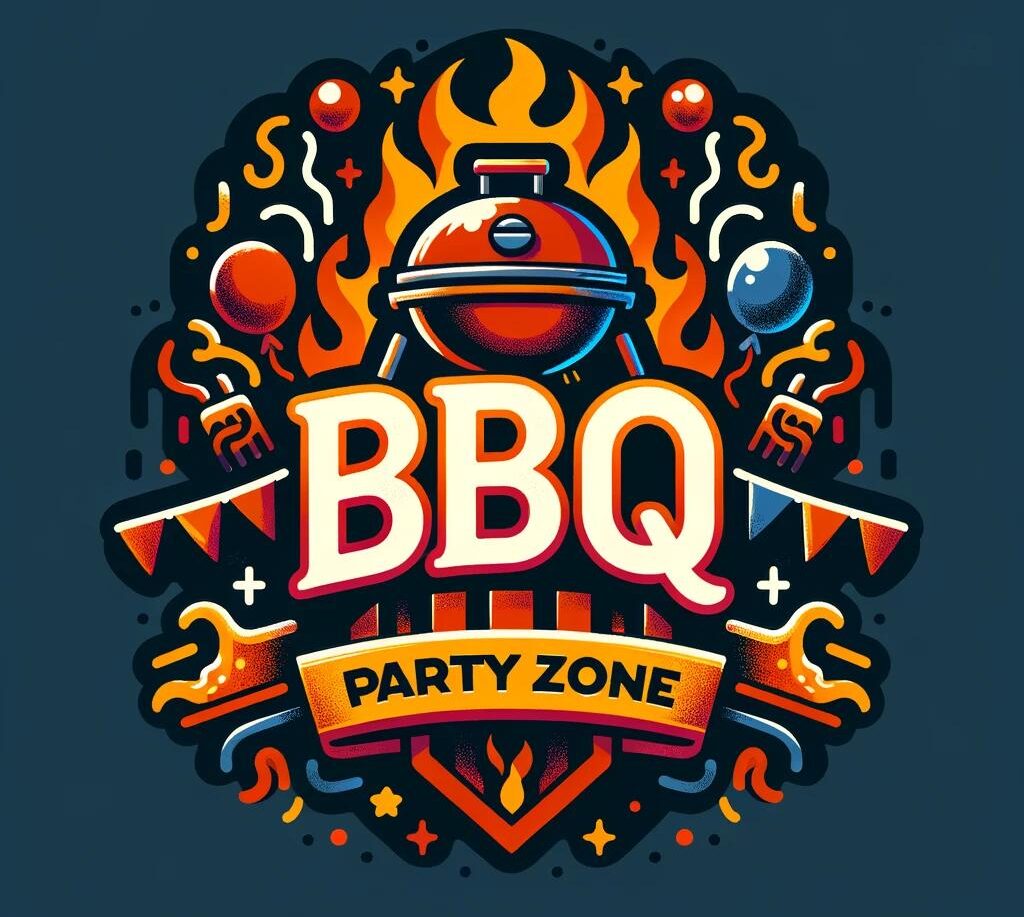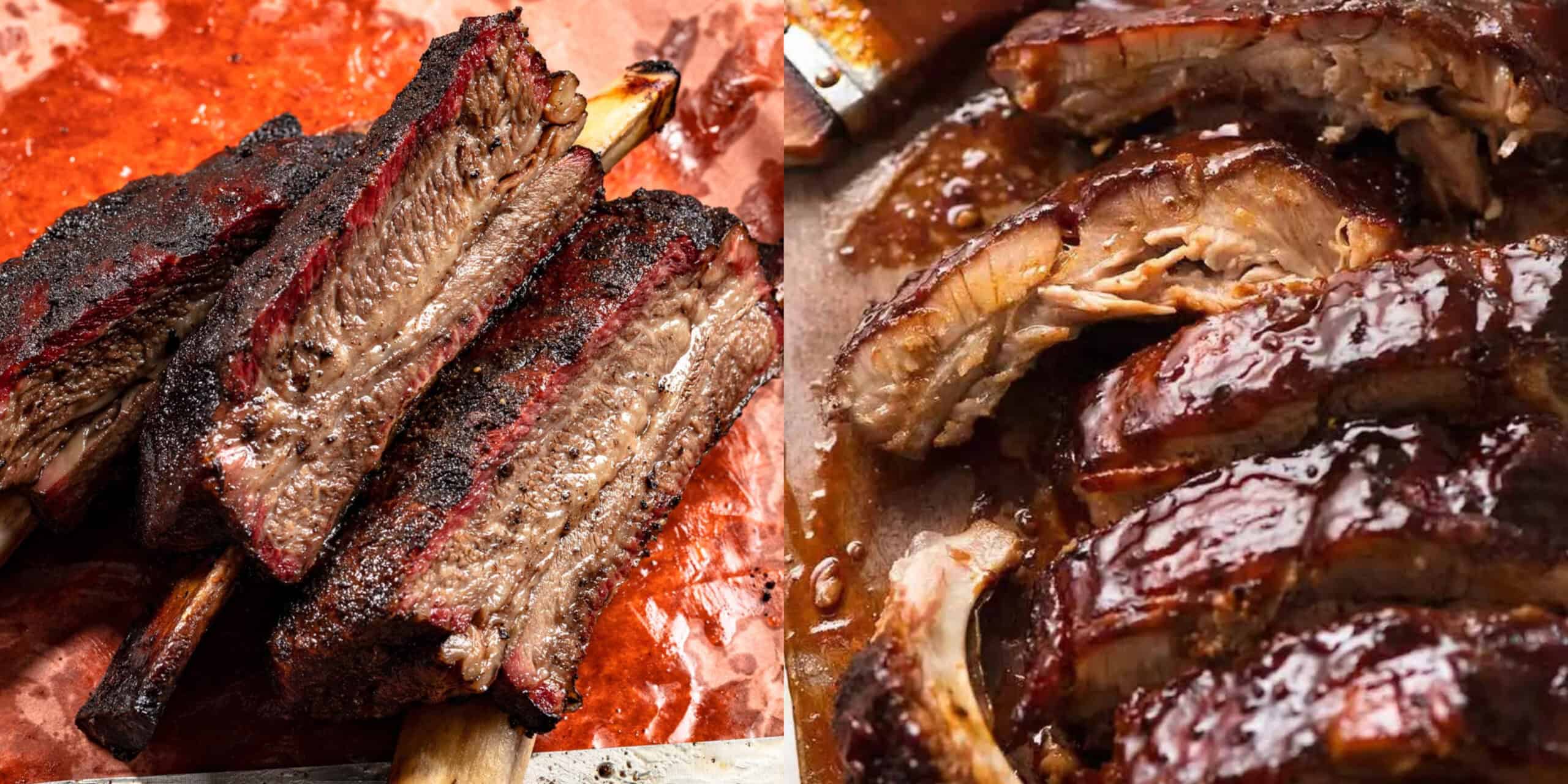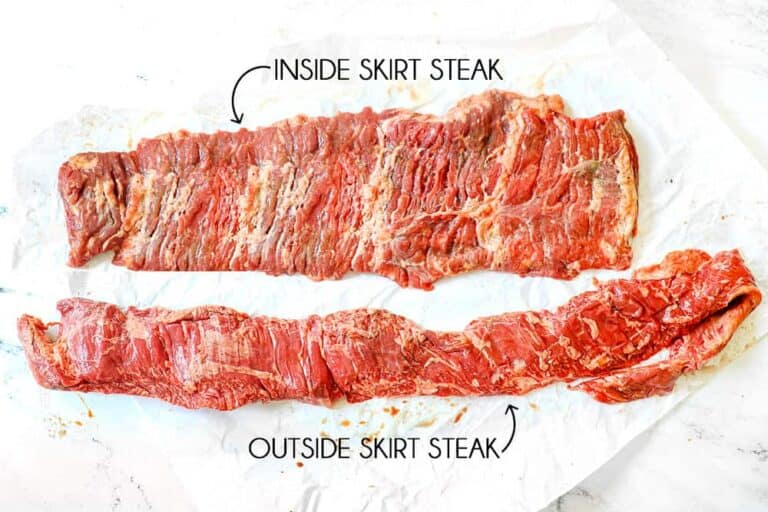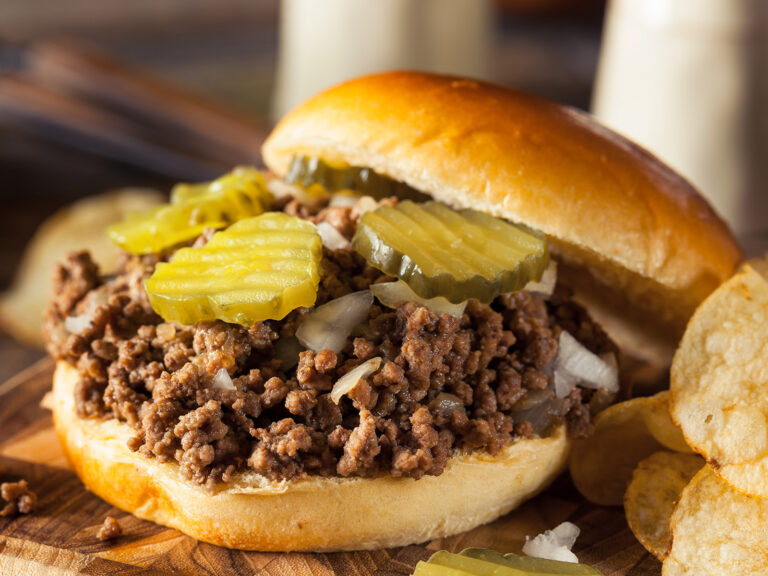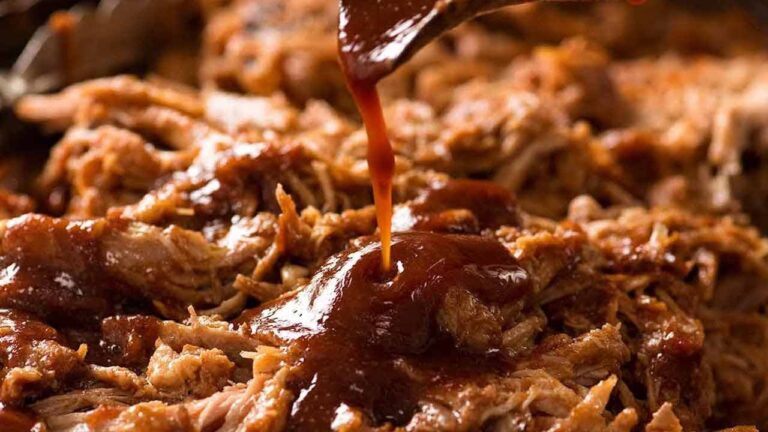Beef vs Pork Ribs: Are Baby Back Ribs Pork or Beef?
Many barbecue enthusiasts often ponder over this question: Are baby back ribs pork or beef? As a culinary expert, I’ve heard this question time and time again. In the realm of smoking and grilling, the distinction of Beef vs Pork Ribss plays a pivotal role in creating the perfect barbecue. So, let’s dive in and settle this once and for all.

What are Baby Back Ribs?
Baby back ribs, also known as back ribs or loin ribs, come from the top of the rib cage between the spine and the spare ribs, below the loin muscle. They are a staple of American barbecue cuisine, famous for their tender, fall-off-the-bone nature. Now, to answer the primary question: Are baby back ribs pork or beef? Baby back ribs are pork. They derive their name from their small size compared to spare ribs, not because they come from young animals.

Reasons You Need to Know the Difference Between Pork and Beef Ribs
Knowing the difference between pork and beef ribs isn’t just trivia—it’s crucial for any aspiring pitmaster. Here’s why:
Flavor Profile: Pork and beef ribs have distinct flavor profiles. Pork ribs, like baby back ribs, have a mild taste that pairs well with a variety of flavors. On the other hand, beef ribs have a robust, meaty flavor that stands up to bold, spicy seasonings.

Cooking Time and Temperature: Pork ribs and beef ribs require different cooking times and temperatures, which can significantly impact the outcome of your barbecue.
Marinades and Rubs: The type of rib you’re cooking will dictate the kind of marinades and rubs you should use to optimize the flavor.

Having this knowledge can help you prepare and cook your ribs properly, ensuring a delicious result every time.
Step-by-Step Instructions to Cook Pork and Beef Ribs
Cooking ribs may seem intimidating, but with the right approach, it’s a straightforward process. Below, I’ll guide you through the steps to cook both pork and beef ribs:
Prepare the Ribs
First, you need to prep your ribs. For pork baby back ribs, remove the membrane from the back of the ribs—it can be tough and chewy when cooked. For beef ribs, trim any excess fat.

Season the Ribs
Next, season the ribs. For baby back ribs, a sweet and smoky rub usually works best, while beef ribs can handle a heartier, spicier rub. Apply the rub generously to all sides.

Cook the Ribs
Finally, it’s time to cook. For baby back ribs, preheat your grill or smoker to 225 degrees Fahrenheit, then cook the ribs for 4-5 hours until tender. For beef ribs, you want a slightly higher temperature—250-275 degrees Fahrenheit—and a longer cooking time, usually 6-8 hours.
| Rib Type | Weight | Smoker Temperature | Cooking Time |
|---|---|---|---|
| Baby Back Ribs | 2 lbs | 225°F | 4-5 hours |
| Baby Back Ribs | 3 lbs | 225°F | 5-6 hours |
| Baby Back Ribs | 4 lbs | 225°F | 6-7 hours |
| Beef Ribs | 2 lbs | 250-275°F | 6-7 hours |
| Beef Ribs | 3 lbs | 250-275°F | 7-8 hours |
| Beef Ribs | 4 lbs | 250-275°F | 8-9 hours |
Keep in mind that these are general guidelines. The exact cooking time may vary depending on the specific cut of the ribs, the exact temperature of the smoker, and the desired level of tenderness. Always use a meat thermometer to ensure your ribs reach the recommended internal temperature of 190-203°F

Key Considerations for Successfully Cooking Ribs
When it comes to cooking ribs, there are several key considerations to keep in mind to ensure they come out tender, juicy, and packed with flavor.
Firstly, selecting the right ribs is crucial. Remember, baby back ribs are pork and are known for their tenderness and quick cooking time, while beef ribs are larger, more flavorful, and require a longer cooking time. When buying ribs, look for those that have a good amount of meat on them and aren’t overly fatty.

Secondly, the way you prepare your ribs can have a significant impact on the end result. For both pork and beef ribs, it’s recommended to remove the membrane on the back of the ribs before cooking. This not only allows your rub and smoke to penetrate the meat better, but also results in a more tender finished product.
Next, your choice of seasonings can greatly enhance the flavor of your ribs. Don’t be afraid to experiment with different dry rubs, marinades, or sauces. For pork ribs, a sweet and tangy rub usually works well, while a spicier rub can complement the strong flavor of beef ribs. However, your seasoning should be applied at least a few hours before cooking, or even the night before, to allow the flavors to permeate the meat.

Temperature control is another vital aspect of successfully cooking ribs. Too high, and your ribs can become tough and dry. Too low, and they may not cook thoroughly. As outlined in the table above, pork ribs should be cooked at a lower temperature for a longer time compared to beef ribs.

Finally, don’t forget the importance of resting your meat. After removing your ribs from the smoker, let them rest for at least 10-15 minutes before slicing and serving. This allows the juices to redistribute throughout the meat, resulting in moister, more flavorful ribs.
By keeping these key considerations in mind, you’re well on your way to cooking up a rack of ribs that are truly mouth-watering, whether they’re baby back ribs (pork) or beef ribs.
Taking it to the Next Level: Enhancing Your Ribs
Even after mastering the basic art of smoking ribs, there are countless ways to enhance the flavor and presentation of your ribs to create a truly gourmet experience. Here are a few ideas to take your ribs to the next level.
Firstly, consider playing around with different types of wood for smoking. The type of wood you use can have a significant impact on the flavor of your ribs. Hickory and oak provide a strong, smoky flavor that goes well with beef ribs, while fruitwoods like apple or cherry give a lighter, sweeter flavor that complements pork ribs.
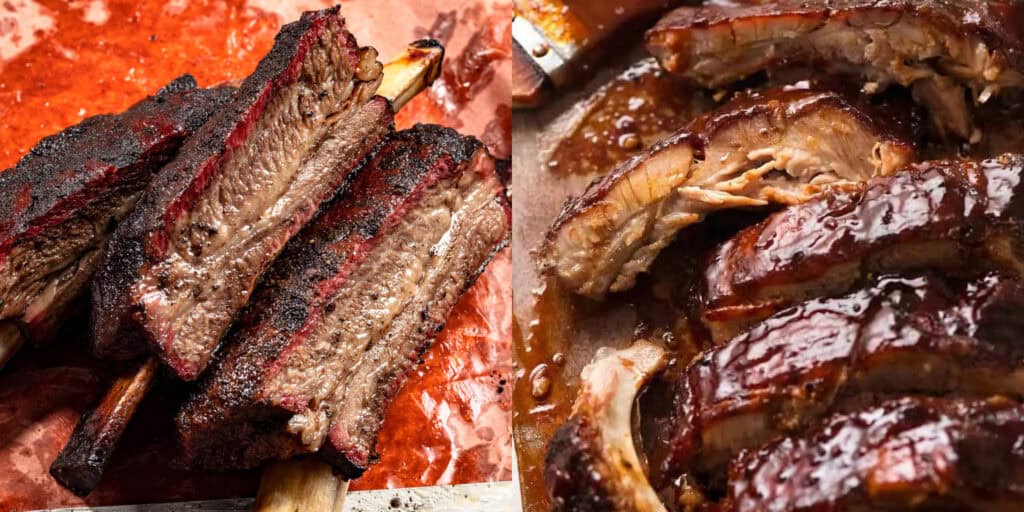
Next, don’t be afraid to experiment with your rubs, marinades, and sauces. There are endless possibilities when it comes to flavor combinations. For instance, try adding some honey, apple juice, or brown sugar to your rub for a sweet twist, or some chili powder or cayenne pepper for a kick of heat.

Additionally, wrapping your ribs partway through the cooking process can help to tenderize the meat and lock in moisture. This is often done using aluminum foil, a method sometimes referred to as the Texas Crutch. Simply remove your ribs from the smoker after they’ve developed a nice crust, wrap them tightly in foil, then return them to the smoker to finish cooking.

You could also try adding some extra flavor to your ribs by brushing them with a glaze or sauce during the last 30 minutes of cooking. This will create a sticky, caramelized crust that adds an extra layer of flavor and texture.
Lastly, don’t underestimate the power of a good presentation. Serving your ribs with complementary sides like coleslaw, cornbread, or grilled vegetables can turn a simple meal into a gourmet feast.

Remember, the key to enhancing your ribs is to not be afraid of experimentation. By trying new techniques and flavors, you’ll be able to continually refine your rib-cooking skills and create dishes that are truly your own.
Alternatives to Grilling or Smoking Ribs
While smoking or grilling ribs can result in incredibly flavorful and tender meat, these methods require time and specialized equipment that you might not always have on hand. Fortunately, there are several alternative cooking methods that you can use to prepare delicious ribs in your own kitchen.

- Oven Baking: This is one of the simplest and most accessible methods for cooking ribs. Rub your ribs with your preferred seasonings, wrap them tightly in foil, and bake them in a low oven (around 275°F) for 2-3 hours for baby back ribs and 3-4 hours for beef ribs. If desired, you can remove the foil and baste the ribs with sauce, then increase the oven temperature and bake for an additional 20-30 minutes to create a sticky, caramelized crust.
- Slow Cooker: Slow cookers are excellent for cooking ribs, as the low and slow cooking process results in incredibly tender meat. Simply season your ribs, place them in the slow cooker, and cook on low for 6-8 hours or on high for 3-4 hours. To finish, you can baste the ribs with sauce and broil them in the oven for a few minutes to get that caramelized finish.
- Braising: Braising involves searing the ribs on the stovetop, then slow-cooking them in a flavorful liquid in the oven. This method gives you the best of both worlds: a rich, seared crust and tender, slow-cooked meat.
- Pressure Cooking: If you’re short on time, a pressure cooker or Instant Pot can be a great way to prepare ribs. Season your ribs and add them to the pot along with some liquid (like broth or apple juice), then cook on high pressure for about 25-30 minutes for baby back ribs or 35-40 minutes for beef ribs. Just like with the other methods, you can baste and broil the ribs after cooking if desired.

Each of these alternatives to grilling or smoking can result in delicious, fall-off-the-bone ribs. The best method for you will depend on the equipment you have and how much time you have to cook. No matter which method you choose, don’t forget to season your ribs well and cook them until they reach an internal temperature of 190-203°F for the best results.
Wrapping Up
So, are baby back ribs pork or beef? The answer is clear: baby back ribs are indeed pork. But don’t let this limit your culinary exploration—both pork and beef ribs offer unique flavors and textures that are well worth experiencing.
As a professional chef, I’ve had the pleasure of working with both types of ribs, and each has its place in the culinary world. The succulent, fall-off-the-bone nature of pork baby back ribs makes them a crowd-pleaser, while the rich, bold flavor of beef ribs makes them a hearty and satisfying meal.
Whether you’re cooking for a summer barbecue, a family gathering, or simply a weeknight dinner, mastering the art of cooking both pork and beef ribs will undoubtedly elevate your cooking game. So roll up your sleeves, fire up your grill (or oven!), and get ready to delve into the delicious world of ribs. Happy cooking!
I hope this guide helps you answer the question, “are baby back ribs pork or beef?” and sets you on the path to creating delectable ribs of your own.
Disclosure: Our blog contains affiliate links to products. We may receive a commission for purchases made through these links. However, this does not impact our reviews and comparisons. We try our best to keep things fair and balanced, in order to help you make the best choice for you.
